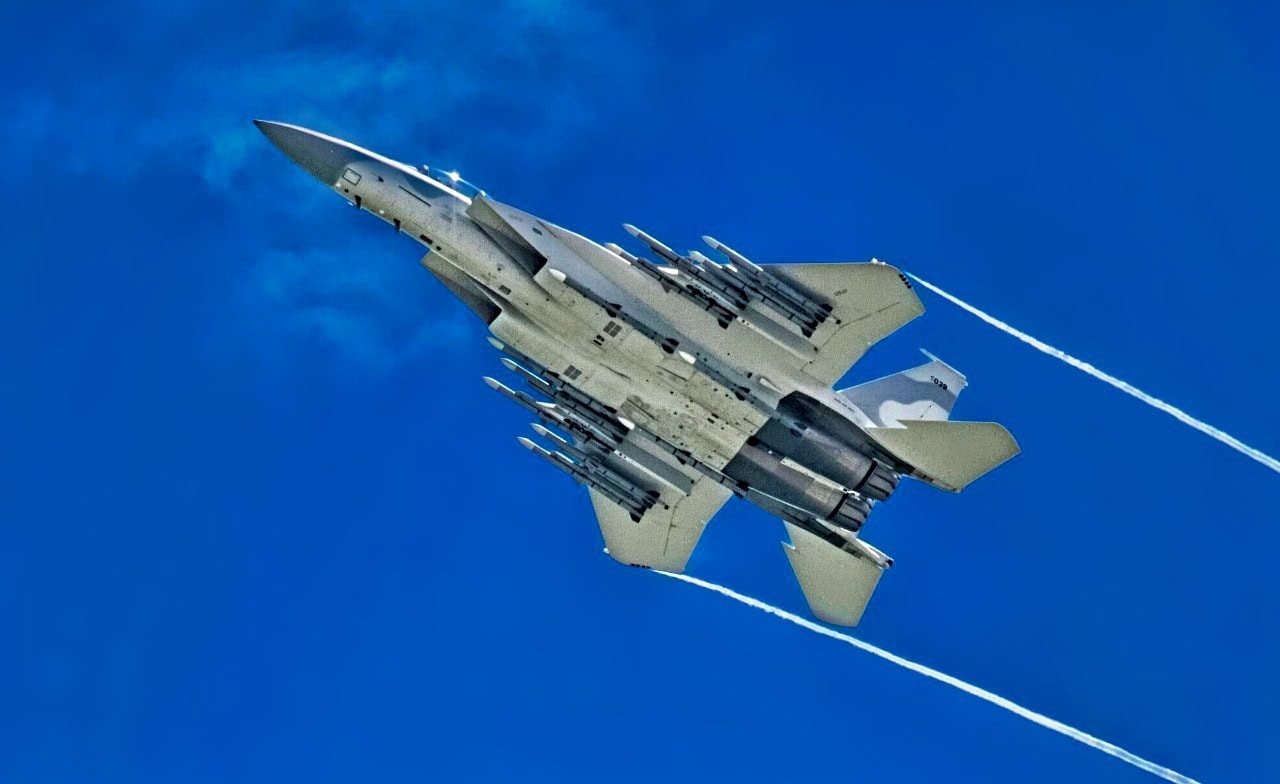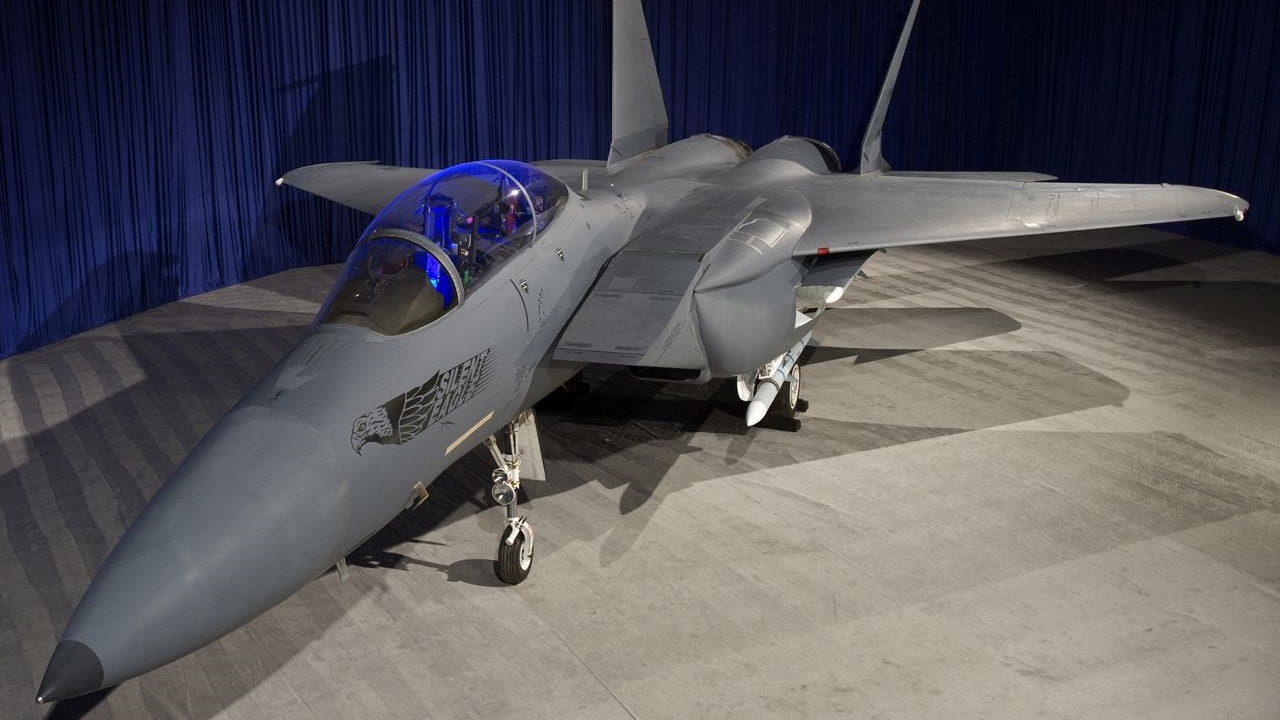Summary and Key Points: In 2009, Boeing attempted turning the F-15 Eagle, an iconic fighter built for speed and maneuverability, into a stealth aircraft dubbed the F-15SE Silent Eagle.
-Despite significant modifications—including internal weapons bays, radar-absorbing coatings, and angled tail fins—the Eagle’s radar signature barely improved.
-It shrank from an enormous 25 square meters to around five—still five times bigger than a non-stealth F/A-18 Super Hornet.
-Ultimately, the F-15’s powerful engines and design philosophy emphasizing raw combat capability proved incompatible with stealth.
-Boeing’s efforts reaffirmed one thing clearly: the Eagle remains best suited as a dominant, high-visibility fighter, rather than a stealthy infiltrator.
Boeing Wanted to Build the F-15SE Silent Eagle Fighter (Stealth Was Not In the Cards)
We’ve said before that the F-15 wouldn’t benefit by being a stealth aircraft, because the F-15 is best when it’s fighting, and you can’t fight if you’re hiding.
But how can I be so sure about this claim? Simple – because Boeing actually tried to turn the F-15 into a stealth fighter back in 2009, and the result was a fighter jet with a radar return that was still about five times bigger than an F/A-18 Super Hornet.
The F-15 was designed in an era when fighters top priorities bar none were brute power and aerobatic performance, and after Uncle Sam spooked himself with made up stories about the capabilities of the Soviet MiG-25, the U.S. spent heavily to create a counter to what it believed the MiG-25 could do.
So, in 1969, the U.S. Air Force awarded McDonnell Douglas a $1.1 billion contract to design and build the first 20 examples of a new American super fighter. If you were to adjust that to today’s money, that’s roughly $9.75 billion for the first 20 F-15s, or just about $485.5 million per Eagle. This means that the first batch of F-15s were each more expensive than the F-35 and even the F-22.
But dumping cash into McDonnell Douglass’ research and development proved to be a sound investment, as the F-15 Eagle went on to absolutely dominate the rest of the 20th century, and today, it maintains an undefeated record of 104 wins and zero losses in air-to-air combat. And of course, the latest iteration Eagle, known as the F-15EX, is now widely touted as the best 4th generation, or non-stealth, fighter in the world.
However, while the new Eagle II is fast, powerful, and even advanced it doesn’t have stealth capabilities. While the F-22 has an estimated radar return of 0.0001 square meters and the F-35 0.0015 square meters, the F-15 boasts a reported, and mind-boggling, 25 square meter radar return. For further comparison, the F/A-18 Super Hornet, another non-stealth aircraft, has a radar return one square meters on a radar screen – 25 times smaller than the Eagle’s.
Which brings us back to Boeing’s F-15 Silent Eagle proposal from 2009. The proposal would have seen conformal weapon bays added to stow the fighter’s missiles away from enemy radars’ prying eyes. Additionally, the aircraft’s gigantic standing vertical tails, which represent a significant portion of the jet’s radar reflectivity, would have been canted outwards by 15 degrees, and the entire aircraft was to be coated in 10-12 millimeters of radar-absorbent materials. A complete overhaul of the jet’s onboard avionics, cockpit, and more was also envisaged.
Boeing even went so far as to really build and test these stealthy conformal weapons bays as a part of its efforts to sell this jet as a competitor for Lockheed Martin’s F-35 for a price tag of just about $100 million per jet.

F-15EX Eagle II from U.S. Air Force. Image Credit: Creative Commons.
Yet, even after all this work, according to reports, the fighter’s massive 25 square meter return was only reduced down to just five square meters, which is about the same as the original F-16A’s and roughly five times the size of an F/A-18 Super Hornet’s.
Heck, with 59,000 pounds of thrust pouring out the back, the Silent Eagle wasn’t even silent.
Which just goes to show, some jets weren’t meant to be sneaky. Some jets just want to fight.
About the Author: Alex Hollings
Alex Hollings is the editor of the Sandboxx blog and a former U.S. Marine that writes about defense policy and technology. He lives with his wife and daughter in Georgia. This first appeared in Sandboxx.

